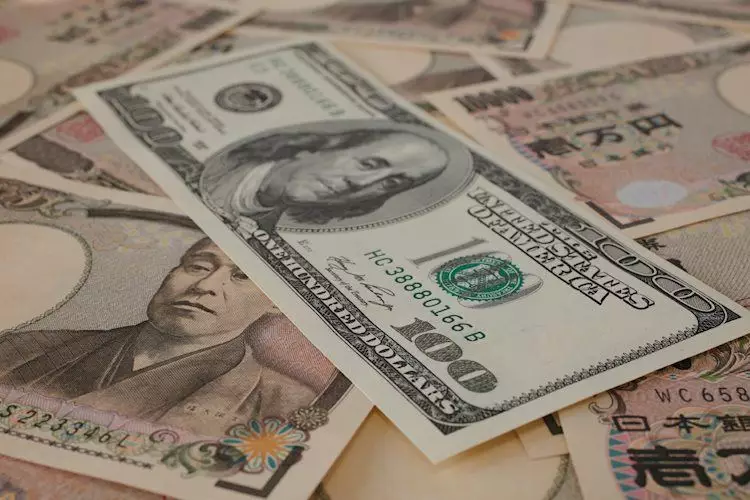In the ever-fluctuating landscape of global finance, the relationship between the U.S. Dollar (USD) and the Japanese Yen (JPY) embodies a complex interplay of economic indicators, monetary policy, and investor sentiment. The recent softening of the USD/JPY pair to approximately 150.05, despite a stronger USD in the Asian trading session on a Friday, serves as an essential case study for understanding these dynamics.
The first striking aspect of the current market situation is the reaction of traders to the prevalent economic data. The U.S. released better-than-anticipated economic figures, particularly regarding September retail sales, which illustrated that the economy was on solid footing in the third quarter. This hints at an enduring consumption trend that helps solidify the USD’s position. Yet, despite these solid indicators, the USD/JPY pair did not soar in response. This peculiar phenomenon suggests that investors also weigh upcoming uncertainties, including critical data releases such as U.S. building permits and housing starts, alongside key speeches from Federal Reserve officials. The seeming contradiction of a strong USD coinciding with a weakening USD/JPY prompts an inquiry into underlying investor psychology and their expectations for future policy decisions.
Another fundamental development impacting the currency pair is Japan’s Consumer Price Index (CPI). The latest report indicated a notable decline in inflation from 3.0% in August to 2.5% in September, signaling a deceleration in price growth. While it may seem advantageous that inflation is now below the central bank’s target, it simultaneously raises questions about Japan’s economic recovery and the possibility of looming deflationary pressures. The CPI’s backdrop, particularly when fresh food and energy costs are excluded, presents a more intricate scenario. The core CPI growth of 2.1% year-over-year suggests resilience, yet this doesn’t negate concerns about future price stagnation.
Bank of Japan (BoJ) Governor Kazuo Ueda’s comments on maintaining current rates amidst uncertainty underline the cautious attitude the central bank is adopting. Their strategy appears to hinge on external factors, notably the U.S. economy’s trajectory. As Taro Kimura of Bloomberg Economics aptly noted, the BoJ seeks clarity on the U.S. economic landscape before making any significant moves, demonstrating their reliance on trend interpretation rather than reactionary policy shifts. This careful approach could serve both to stabilize the weakening Yen and cushion the impacts of rising international pressures.
The Fed’s Intricate Dance
On the other side of the Pacific, the Federal Reserve’s inclination towards gradual rate cuts adds complexity to the USD/JPY dynamic. Bostic and Kashkari, who represent varying perspectives within the Fed, suggest a careful balancing act in navigating monetary policy. The market has factored in a 90.3% probability of a 25 basis point rate cut next month, indicating that risk sentiment remains closely tied to economic reports. As traders recalibrate their expectations accordingly, this ongoing speculation further fuels the currency pair’s volatility.
With a broader lens on the USD and JPY dynamics, one should not overlook the structural challenges faced by Japan’s economy. Over an extended period, the BoJ’s ultra-loose monetary policy has led to significant depreciation of the Yen against major peers. Nevertheless, the gradual withdrawal from this policy could instigate changes in the currency’s relationship with the USD. The implications of shifting central bank policies—particularly with U.S. interest rates potentially moderating and Japan’s gradual tightening—might congeal into a narrower interest rate differential.
Safe Haven or Risky Investment? The Yen’s Dual Nature
Perceptions of the Yen are multifaceted; it is often regarded as a safe-haven asset. During periods of market tumult, investors frequently flock to yen investments, seeking stability amidst chaos. However, this traditional view is complicated by ongoing global economic conditions. If the market sentiment remains cautious about risk, the JPY could regain strength against the USD. Conversely, a resurgence in risk-on behavior, fueled by solid economic indicators from the U.S. and a hesitant outlook from Japan, might weaken the Yen further.
The USD/JPY pair is not merely subject to the influences of monetary policy or direct economic indicators. Instead, it reflects the intricate tapestry of market expectations, central bank strategies, and evolving investor sentiments. Navigating these complexities requires a keen understanding of both domestic and international factors, emphasizing why this currency pair remains a focal point for traders and analysts alike. Ensuring one stays updated on economic developments and central bank announcements will be key for anyone looking to comprehend or speculate on this pivotal economic relationship.

